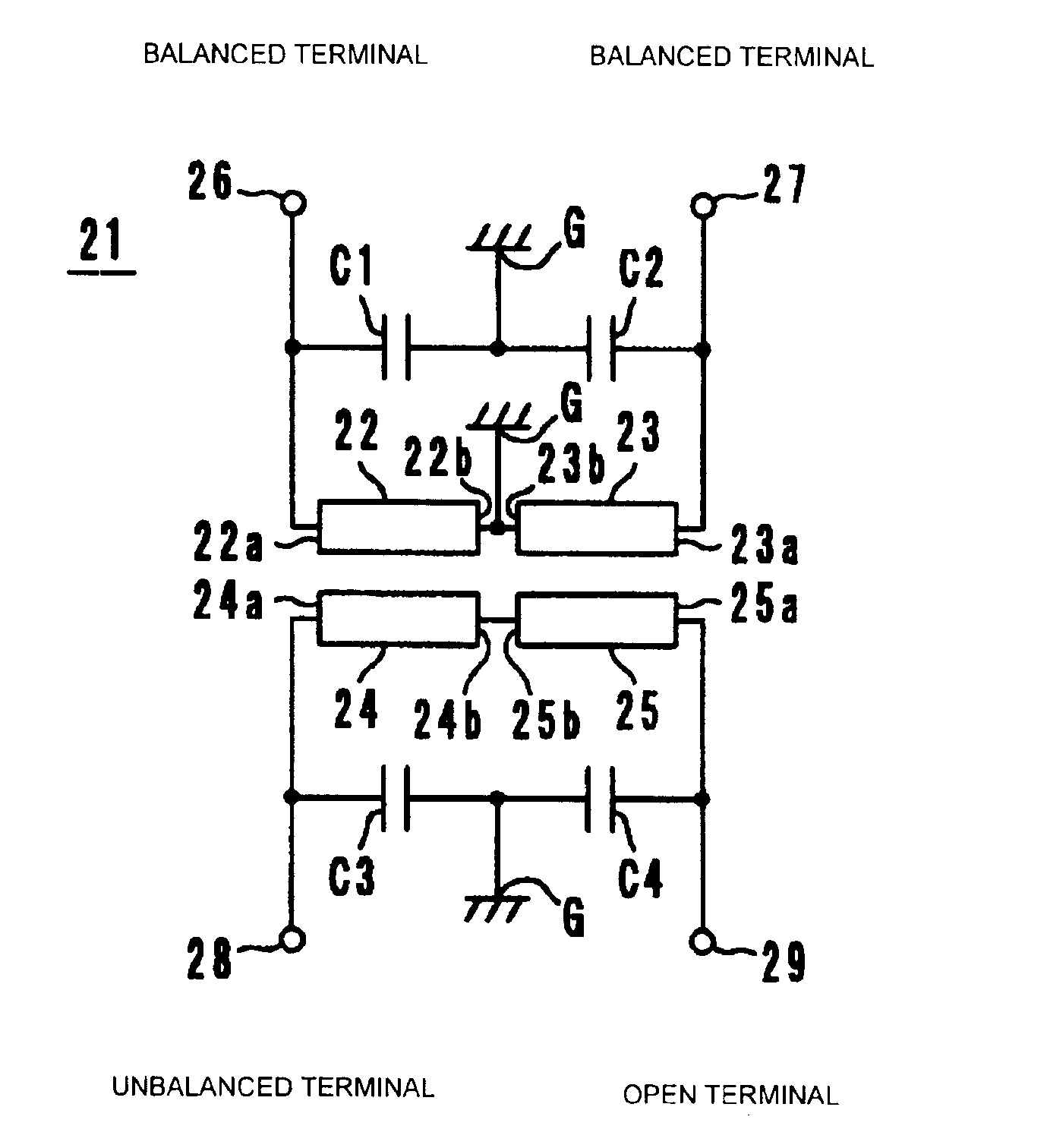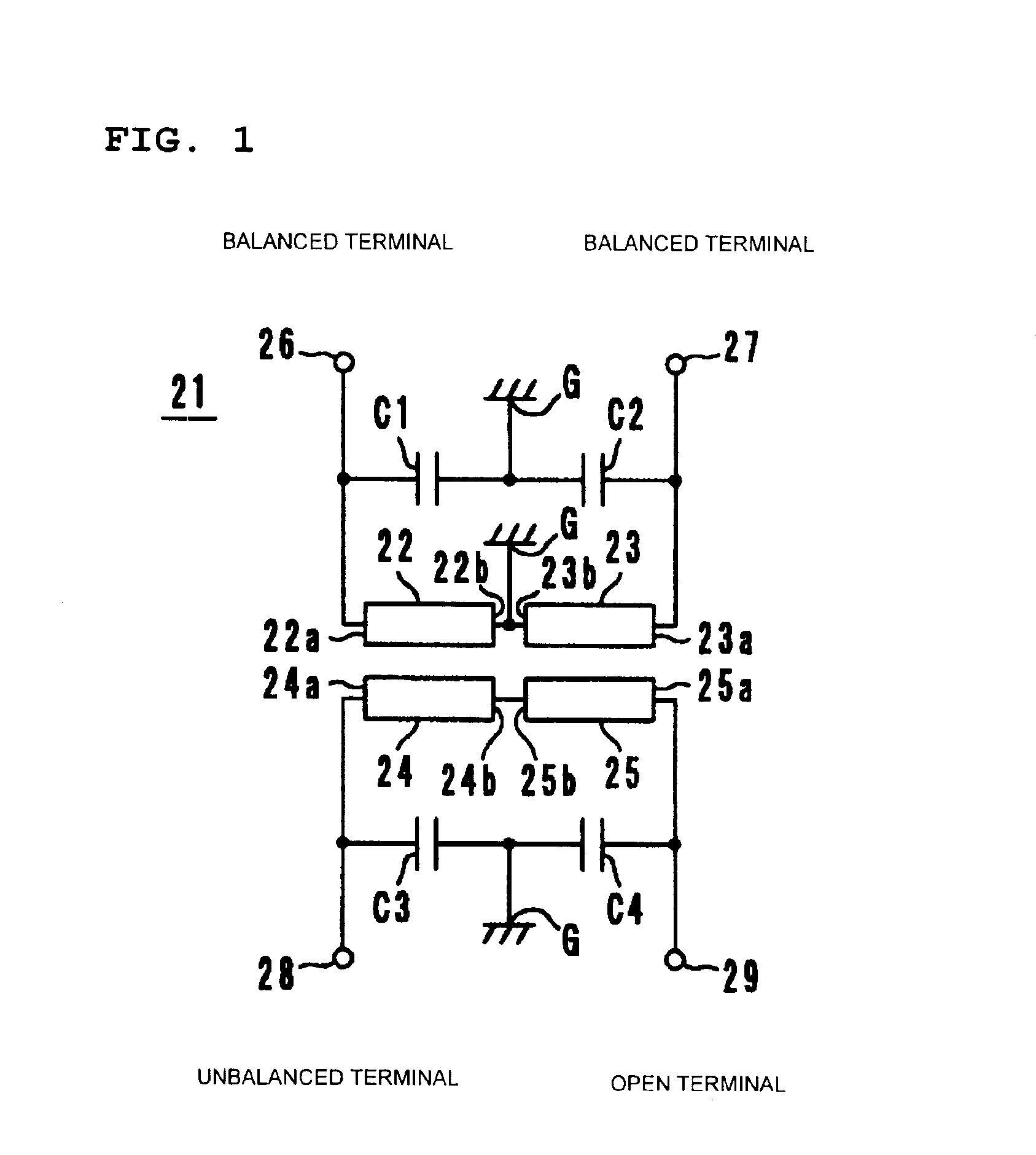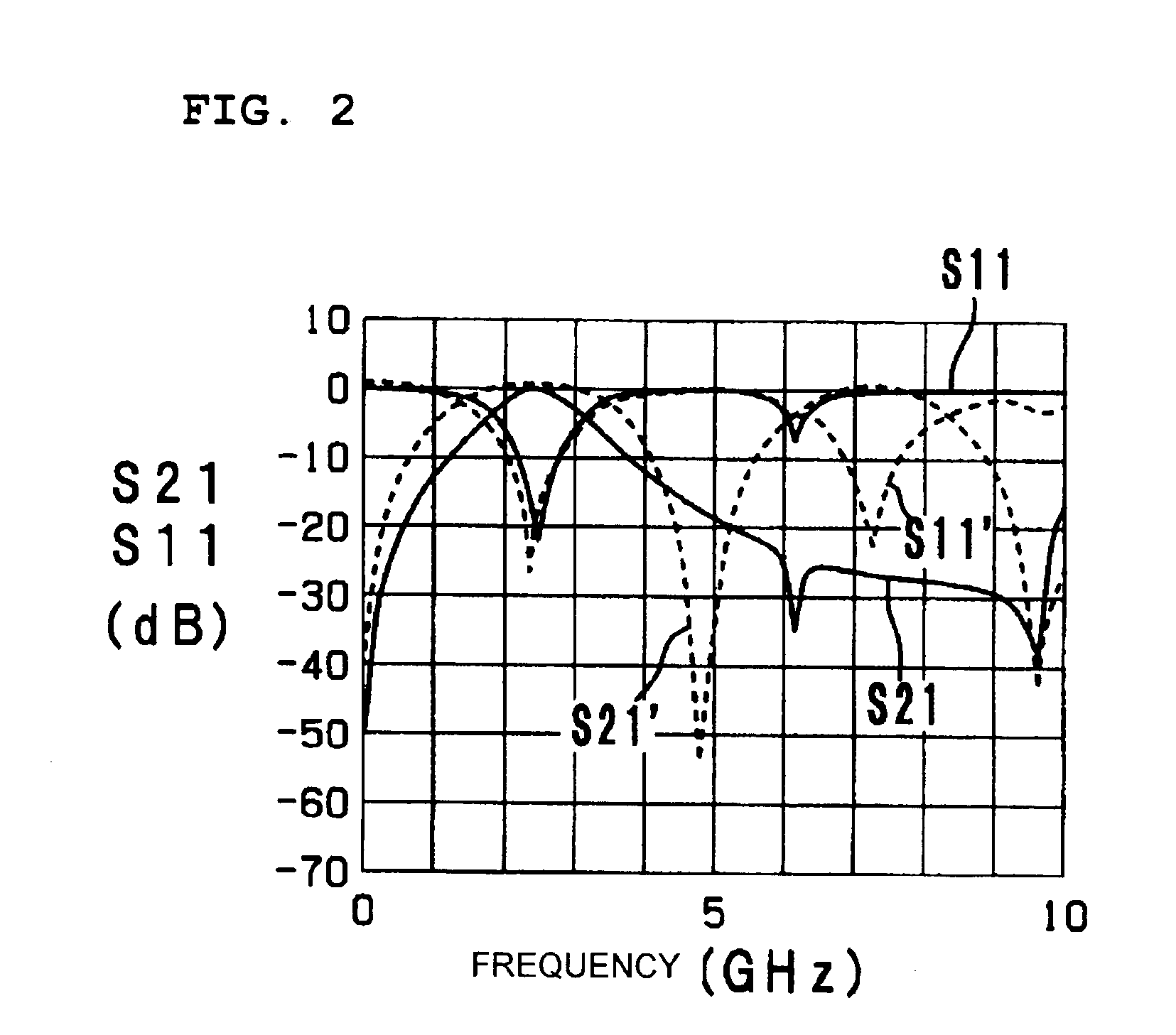Balanced-unbalanced converting circuit and laminated balanced-unbalanced converter
a technology of unbalanced converting circuit and laminated converter, which is applied in the direction of electrical equipment, multiple-port networks, waveguides, etc., can solve the problems of increasing circuit size, increasing insertion loss, increasing circuit elements, etc., and achieves better spurious signal suppression, reduce the thickness and reduce the size of the balanced-unbalanced converter
- Summary
- Abstract
- Description
- Claims
- Application Information
AI Technical Summary
Benefits of technology
Problems solved by technology
Method used
Image
Examples
first preferred embodiment
[0031]A balun circuit 21 according to a first preferred embodiment of the present invention will be described with reference to FIGS. 1 and 2. As shown in FIG. 1, the balun circuit 21 includes strip lines 22, 23, 24, and 25 of a quarter wavelength or less. The strip lines 22, 23, 24, and 25 have first ends 22a, 23a, 24a, and 25a, and second ends 22b, 23b, 24b, and 25b, respectively. The first end 22a of the strip line 22 is electrically connected with a balanced terminal 26, and the second end 22b thereof is electrically connected with a ground terminal G. The first end 23a of the strip line 23 is electrically connected with a balanced terminal 27, and the second end 23b thereof is electrically connected with the ground terminal G. The first end 24a of the strip line 24 is electrically connected with an unbalanced terminal 28, and the second end 24b thereof is electrically connected with the second end 25b of the strip line 25. The first end 25a of the strip line 25 is electrically ...
second preferred embodiment
[0038]A balun circuit 41 according to a second preferred embodiment of the present invention will be described with reference to FIGS. 3 and 4. The balun circuit 41 shown in FIG. 3 is different from the balun circuit 21 shown in FIG. 1 in that a trap circuit 44 is electrically connected between the balanced terminal 26 and the strip line 22 and a trap circuit 45 is electrically connected between the balanced terminal 27 and the strip line 23. The trap circuit 44 is an LC parallel resonant circuit having a capacitor C5 and a coil (strip line) 42. The trap circuit 45 is preferably an LC parallel resonant circuit having a capacitor C6 and a coil (strip line) 43.
[0039]FIG. 4 is a graph showing the transmission (S21) characteristic and input reflection (S11) characteristic of the balun circuit 41, as indicated by solid lines S21 and S11, respectively. For the sake of comparison, FIG. 4 also shows the transmission (S21′) characteristic and input reflection (S11′) characteristic of the bal...
third preferred embodiment
[0040]A balun circuit 51 according to a third preferred embodiment of the present invention will be described with reference to FIGS. 5 to 7. The balun circuit 51 shown in FIG. 5 is different from the balun circuit 41 shown in FIG. 3 in that a coil (strip line) 52 is electrically connected between the balanced terminal 26 and the trap circuit 44 and a coil (strip line) 53 is electrically connected between the balanced terminal 27 and the trap circuit 45 in order to adjust the imaginary part of the impedance of the trap circuit 44 and 45, respectively. These coils allow for easy impedance adjusting of the trap circuits 44 and 45. Specifically, the longer the line lengths of the coils 52 and 53 to increase the inductance, the higher the imaginary part of the impedance; the shorter the line lengths of the coils 52 and 53 to reduce the inductance, the lower the imaginary part of the impedance.
[0041]FIG. 6 is an exploded perspective view of a laminated balun converter 51A incorporating t...
PUM
 Login to View More
Login to View More Abstract
Description
Claims
Application Information
 Login to View More
Login to View More - R&D
- Intellectual Property
- Life Sciences
- Materials
- Tech Scout
- Unparalleled Data Quality
- Higher Quality Content
- 60% Fewer Hallucinations
Browse by: Latest US Patents, China's latest patents, Technical Efficacy Thesaurus, Application Domain, Technology Topic, Popular Technical Reports.
© 2025 PatSnap. All rights reserved.Legal|Privacy policy|Modern Slavery Act Transparency Statement|Sitemap|About US| Contact US: help@patsnap.com



